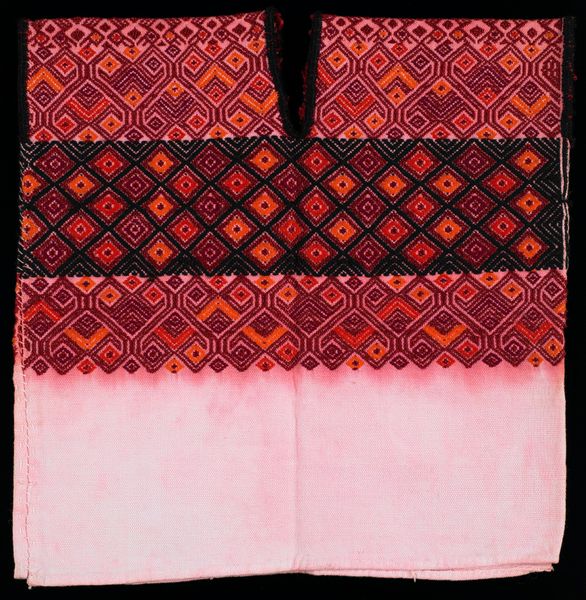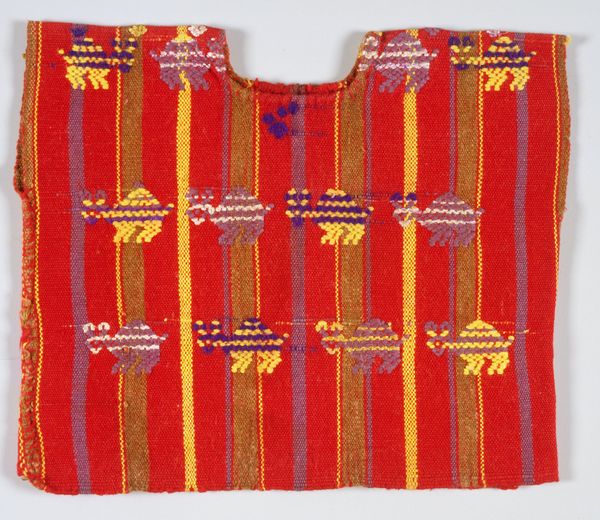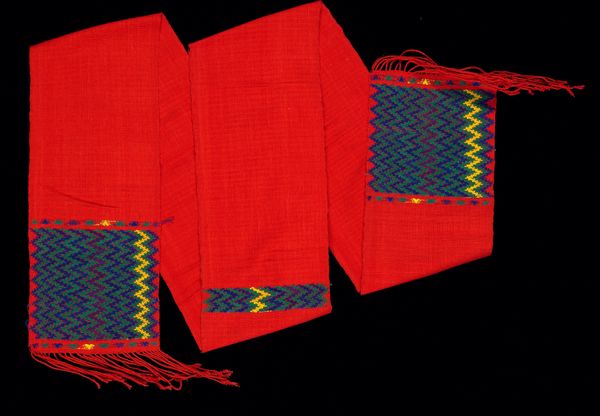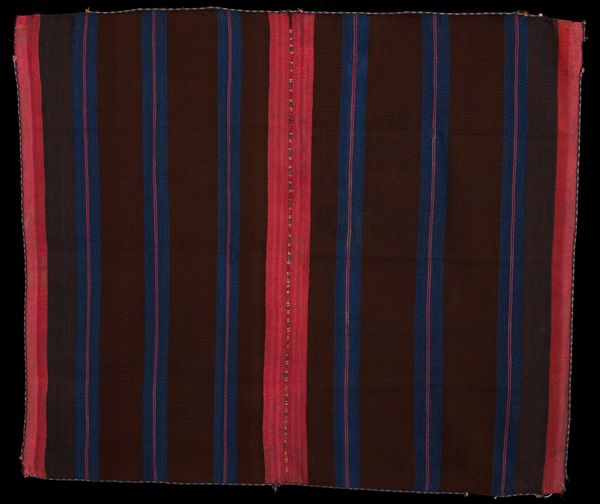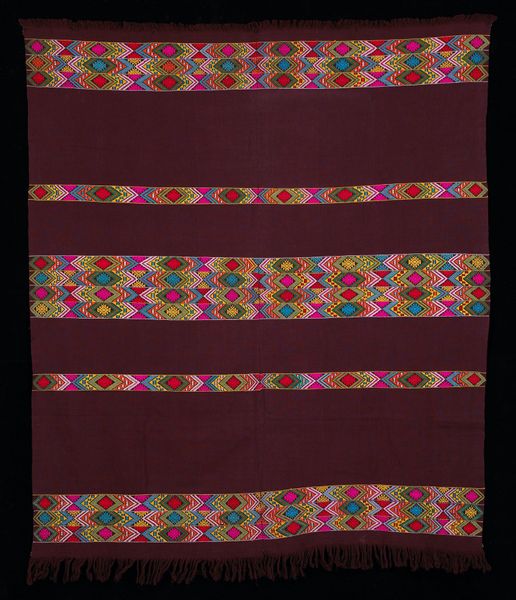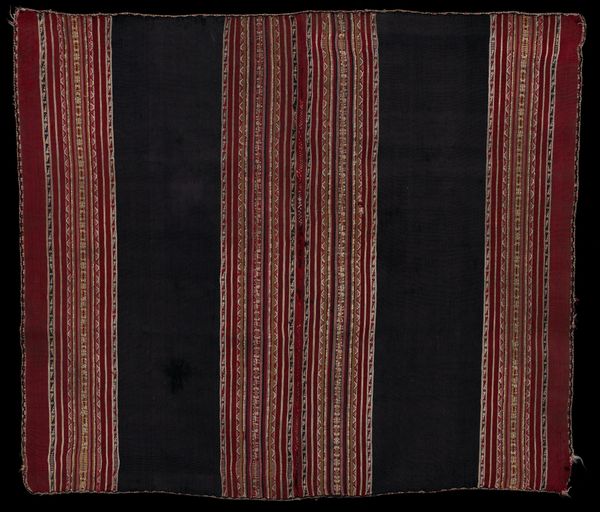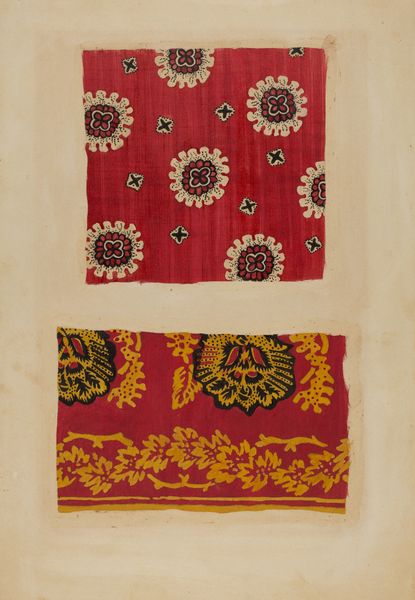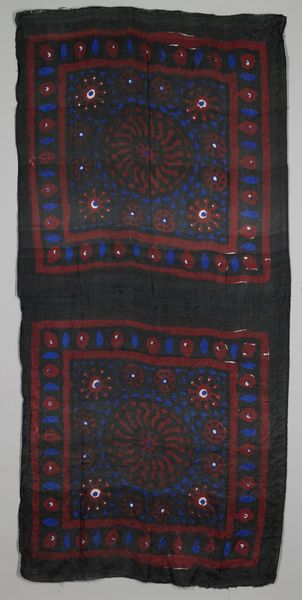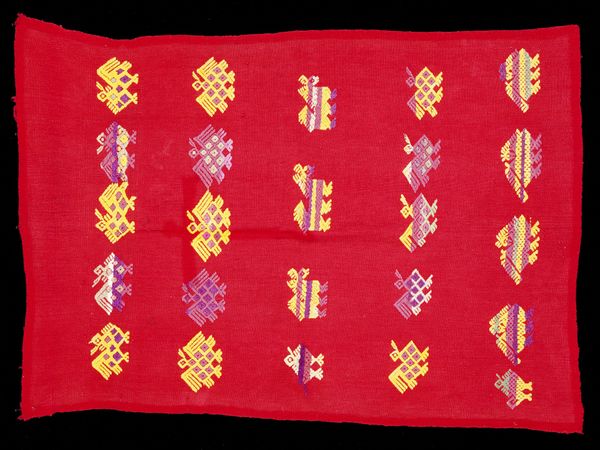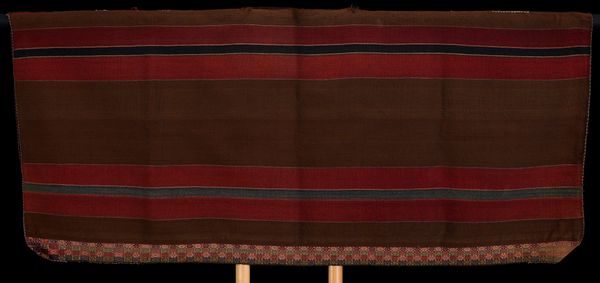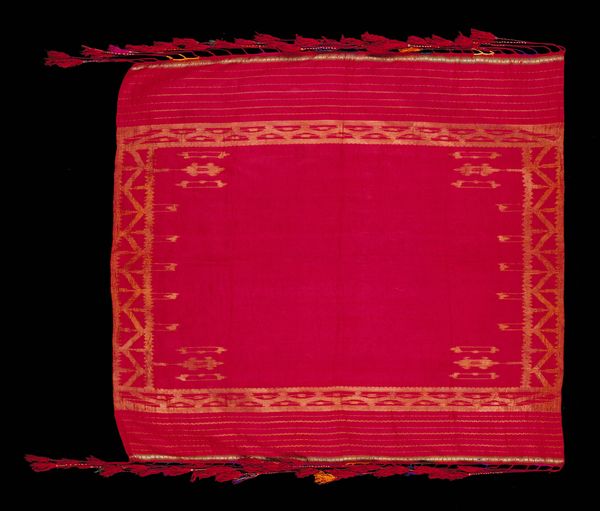
fibre-art, weaving, textile, cotton
#
red colour repetition
#
fibre-art
#
weaving
#
multicoloured
#
textile
#
geometric pattern
#
repetition of pattern
#
pattern repetition
#
cotton
#
textile design
#
imprinted textile
#
layered pattern
#
funky pattern
#
motif
#
indigenous-americas
Dimensions: 27 3/4 x 30 1/2 in. (70.49 x 77.47 cm)
Copyright: Public Domain
Editor: Here we have "Woman's Blouse," a textile piece likely made of cotton, dating back to around 1955. The intricate, almost funky pattern is immediately eye-catching, and I am really drawn to those vibrant animal motifs! What stories do you think this blouse might tell? Curator: It tells us a great deal about the cultural and social roles of textile art, and specifically women's labor, which is often undervalued. Notice how the geometric patterns and figures are woven. Consider this object not merely as clothing but as a form of cultural expression, a language in itself. It also references the Pattern and Decoration movement, as well as broader histories tied to indigenous American art. Can you imagine who would have worn this garment and in what setting? Editor: I imagine this blouse would have been worn during cultural gatherings or special occasions. Perhaps even everyday wear by someone incredibly stylish! It’s amazing to think this everyday object has the weight of cultural storytelling woven into it. Do you think it challenges the conventional hierarchy between "fine art" and craft? Curator: Absolutely! Textiles like this challenged—and continue to challenge—Western notions of art that historically privilege painting and sculpture. Indigenous textile production has often been sidelined in art historical narratives. This piece asserts the significance and artistic skill embedded within it, doesn’t it? By displaying pieces like this, museums have a responsibility to broaden public understanding of artistic production beyond traditionally sanctioned forms. How do you think exhibiting such pieces influences our contemporary understanding of art? Editor: I think displaying pieces like this definitely challenges the art world to be more inclusive, by recognizing artistic practices by makers across diverse backgrounds and cultures. I now realize there are political aspects of deciding what "counts" as art and how institutions play a role. Curator: Precisely. The story of this "Woman’s Blouse" goes beyond its aesthetic appeal, becoming a case study for the social construction of artistic value and the politics of display. Editor: I hadn’t thought about museums having an effect on the art that's seen. Thanks for the different way to think of this "Woman’s Blouse!"
Comments
No comments
Be the first to comment and join the conversation on the ultimate creative platform.
